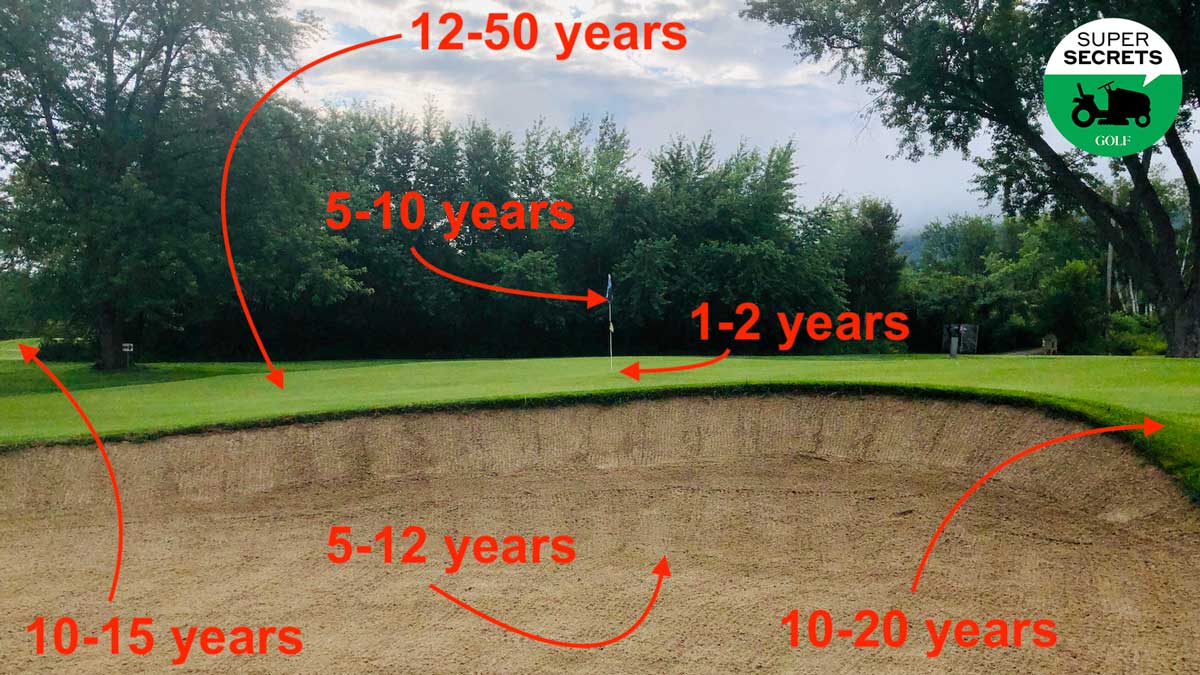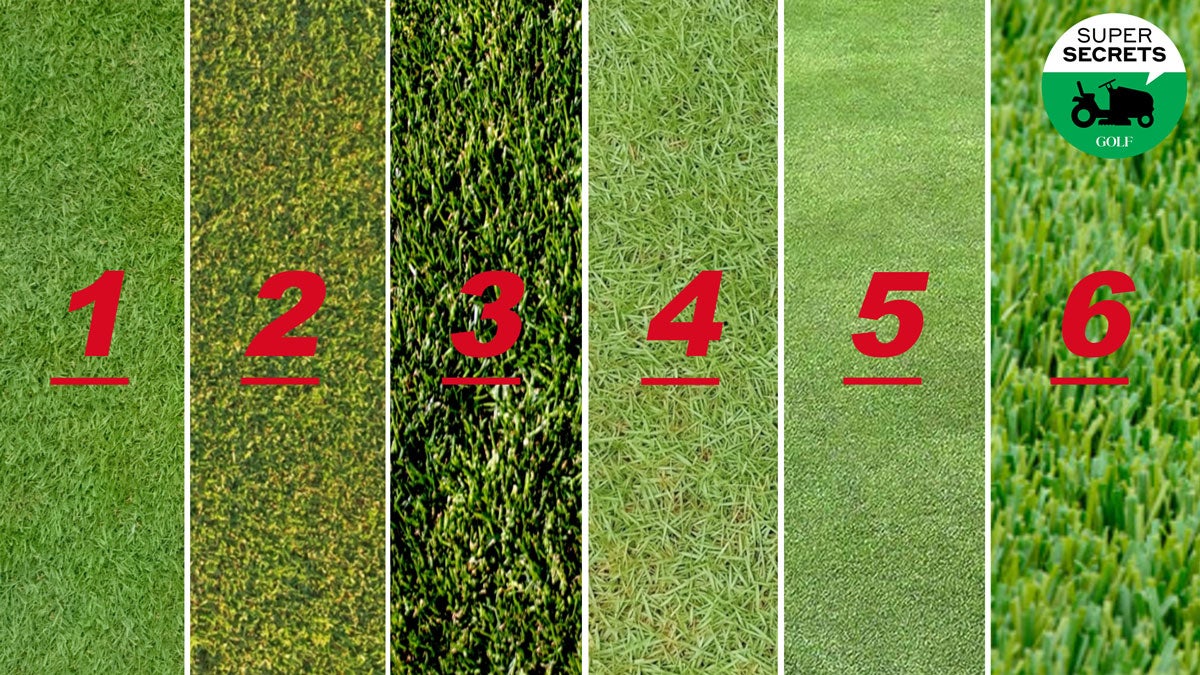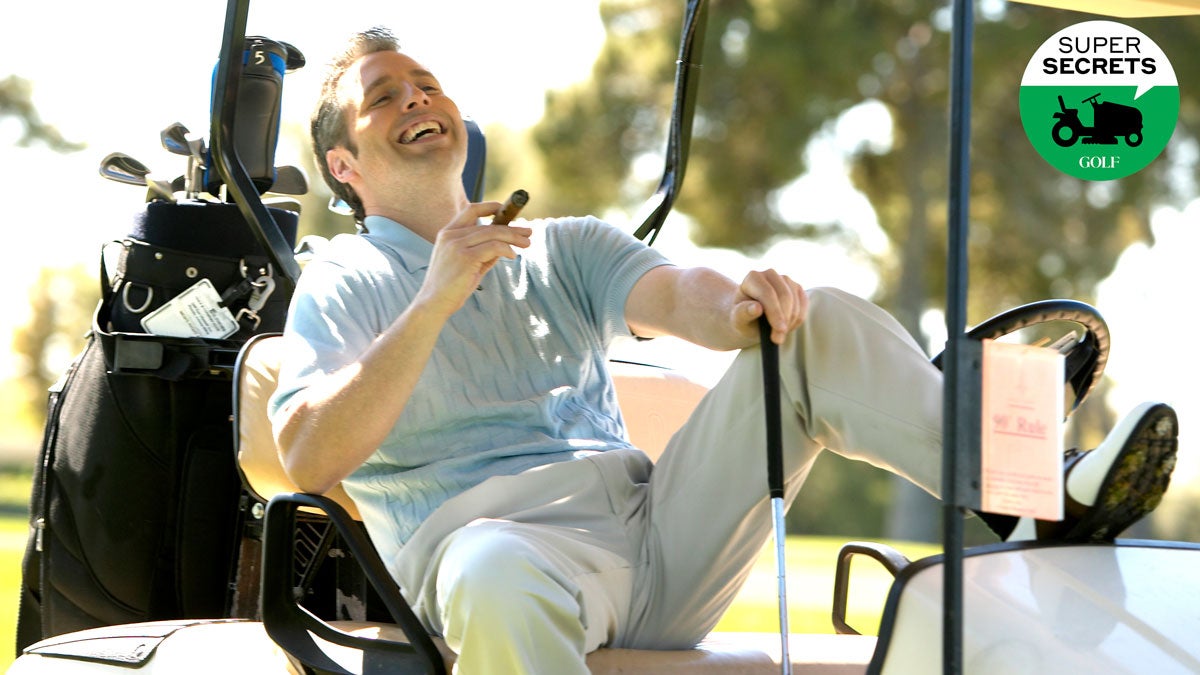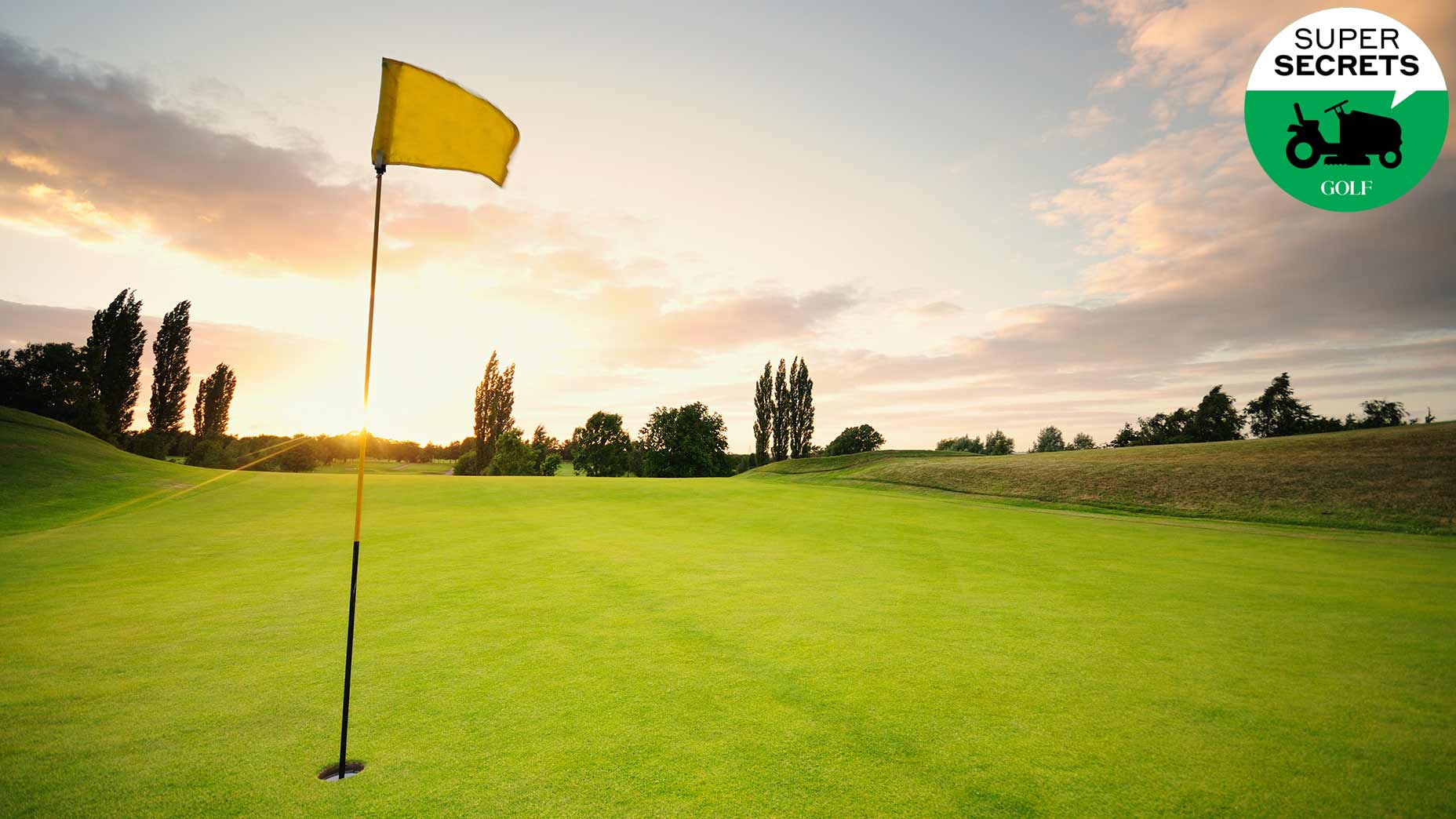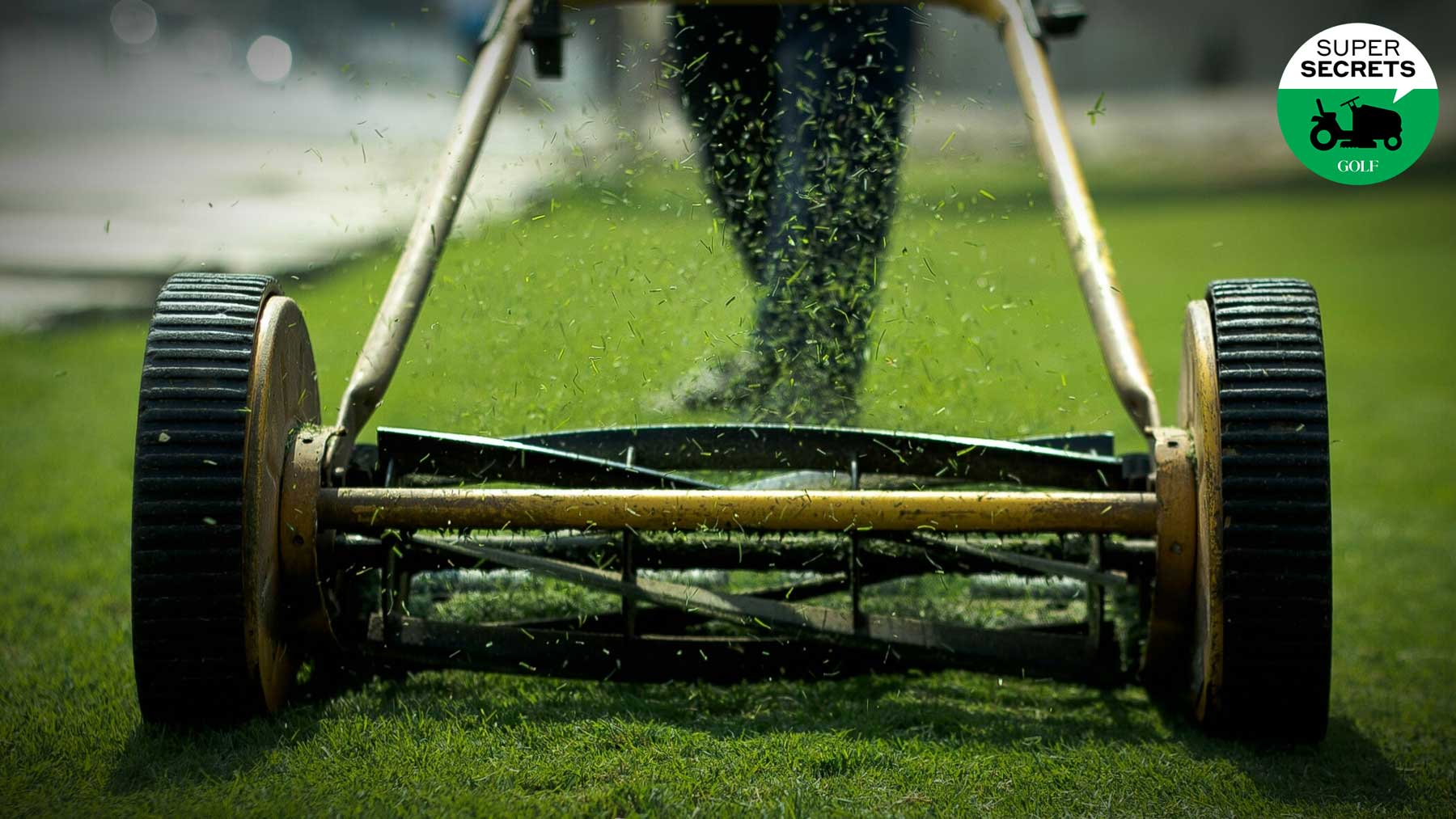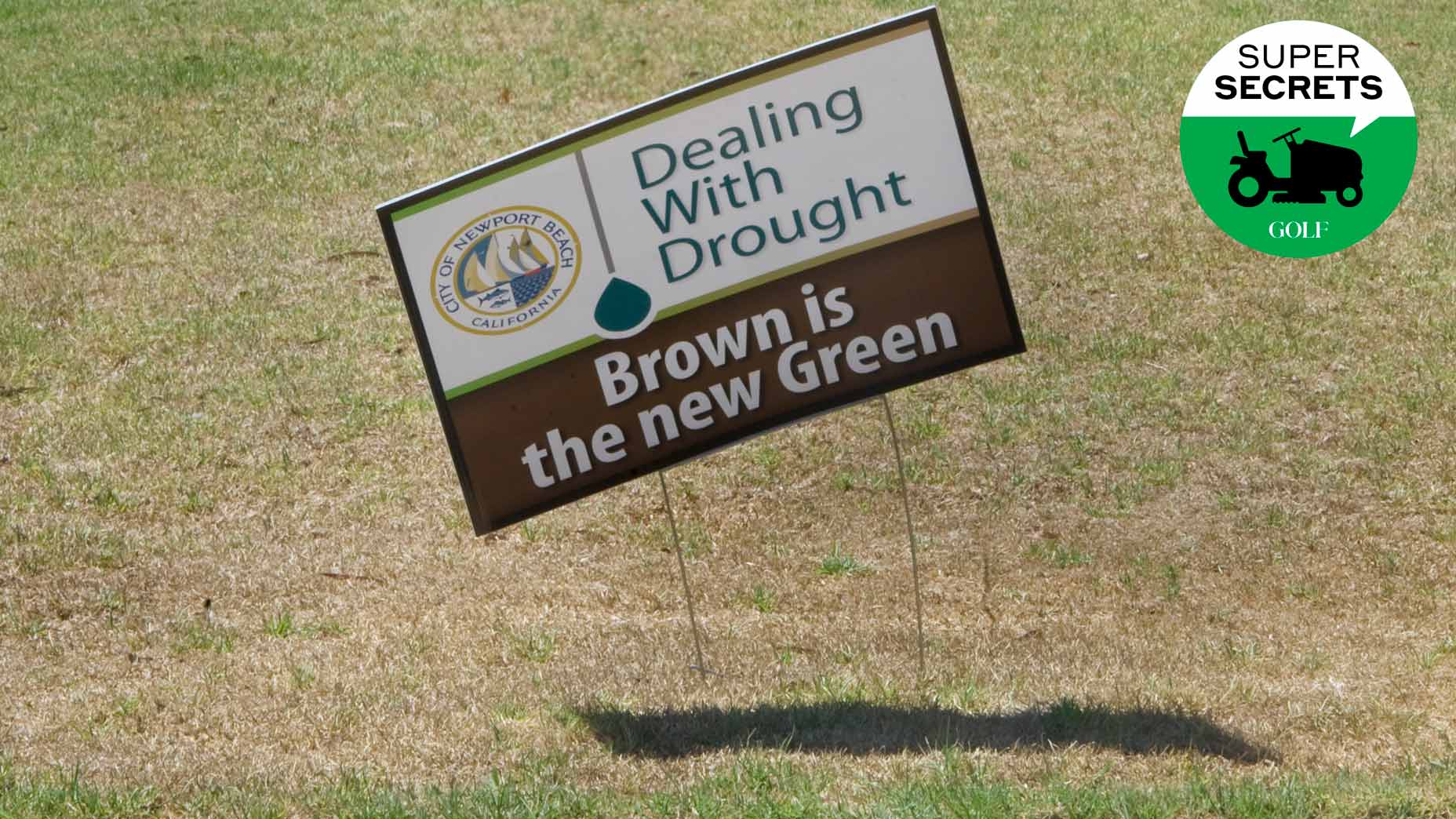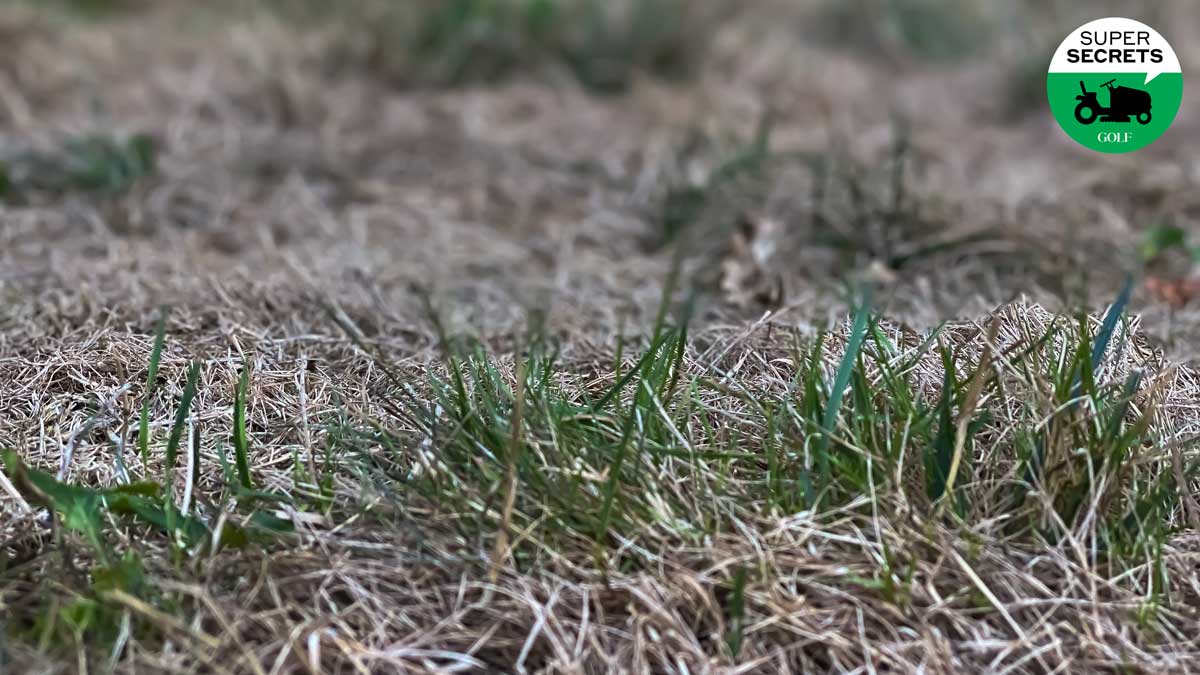There’s a lot of talk in golf about the length of courses, but not much about their longevity.
Irrigations systems age. Tees and greens lose their shape and luster. Bunkers require restoration.
Nothing lasts forever.
But how long do key course elements endure?
Terry Buchen, a retired superintendent and 54-year member of the Golf Course Superintendents Association of America (GCSAA), held the top job at such marquee properties as Riviera, Castle Pines and the Golf Club of Oklahoma. Still active as a course consultant (talk about longevity!), Buchen has also published articles on a wide range of superintendent-related matters, including the topic at hand here.
What is the life expectancy of a tee box? A ball washer? A cart path? A bunker? Though a range of variables influence the answers, such as climate, maintenance budgets and quality of original construction, Buchen has crunched the numbers and arrived at estimates. Here’s a bird’s-eye look at his actuarial accounting.
(Note: If you really want to get into the weeds on this subject, check out this chart, which Buchen produced for Golf Course Management, the official magazine of the GCSAA; it provides a complete breakdown of lifespan estimates, divided into three climatic regions: cool season, warm season and the transition zone.)
6 grass types every golfer should know, and how each affects your gameBy: Josh Sens
Greens: 12 to 50-plus years
Not all greens are created equal, and that impacts when they need to be rebuilt. Some are push-up greens, a throwback method that involves pushing up and shaping the native soil. Others are sand based. Still others are constructed to USGA specs, which have been an industry standard since the 1960s. The quality of drainage can have a major impact on the lifespan of a putting surface. Ditto maintenance practices, and volume of play. Throw in climatic variables (in warmer regions, for instance, where courses are subjected to more year-round wear and tear, infrastructure generally doesn’t last as long) and you start to understand why the averages range so widely.
Tee boxes: 12 to 20 years
The same factors that affect greens also influence the lifespan of tee boxes. But because tees are more uniform in construction, with longer turf that can survive more punishment, their life expectancies vary less across the board.
Fairways: 10 to 15 years
Just as the golden rule of real estate is location, location, location, the golden rule of turf care is drainage, drainage, drainage. It has a huge effect on the life expectancy of a fairway (i.e, when they need to be re-grassed), though sunlight, traffic and air movement also come into the equation here.
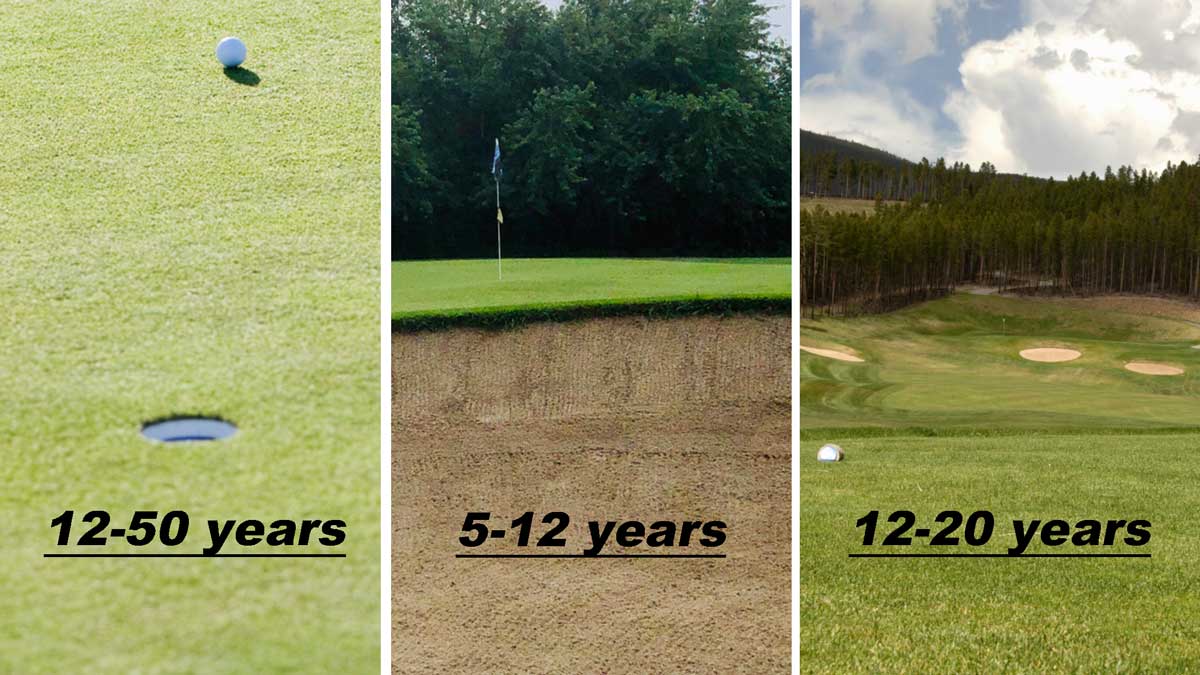
Bunkers and surrounds: 10 to 20 years
Bunkers lose their shape for a lot of reasons. Cart and foot traffic around their edges. Shoddy maintenance practices. Lack of bunker liners, which help hold sand up on steep faces. The list goes on. In warm climates, where aggressive grasses like Bermuda and kikuyu grow around their edges, bunkers often need to be reshaped more often than they do in cooler regions, where the turf is less likely to encroach.
Bunker sand: 5 to 12 years
Ever play a course with rocks or other impurities in the bunkers? There is a good chance those bunkers had no liners, or liners that had outlived their use. Liners prevent the native soil from contaminating the bunker sand, an especially important barrier when it rains. At some point, all sand gets contaminated. But without liners, that sand will need to be replaced sooner than later.
Cart paths: 7 to 20 years
In this age of modern-minimalism, a growing number of courses opt for rustic-looking paths, laid with decomposed granite or even hard-packed dirt. Even so, Buchen says, asphalt and concrete remain the most common cart path materials, so those are the categories he accounts for here. If you’re keeping score at home, concrete is the longer lasting of the two.
12 golfer habits that *really* annoy superintendents, according to superintendentsBy: Josh Sens
Irrigation systems: 8 to 50-plus years
Controllers. Wiring. Sprinkler heads. Swing Joints. Irrigation systems have all kinds of components; the ones we just ticked off last an average of 8 to 12 years. As for pipes, there are two main types: PVC, which is made of plastic, and HDPE, which is seamless and longer lasting, with a lifespan of 50 years or more. Then there are pump stations: Buchen pegs their life expectancy at 8 to 15 years.
Tee markers, ball washers, penalty-area stakes: 3 to 5 years
With a quick sandblast or a fresh coat of paint, course accessories like these can be made to look almost as good as new. A lot of courses treat such jobs as “rainy-day projects,” Buchen says. How often these items get replaced often boils down to budgets. At a high-end private course where Buchen once worked, for instance, he and his staff installed freshly painted cups once a week.
Flagsticks: 1 to 2 years
Knocked around by golfers and by mother nature, flagsticks, Buchen says, are usually good for about a season or two. The flags themselves are a different story. They often need replacing two to three times a year, as they get soaked by rain and sprinklers, and faded by the sunlight.
Cups: 5 to 10 years
Plastic or metal? The former is cheaper. The latter lasts longer and produce a sweeter sound when the ball drops. What usually wears out first is not the cup itself but the hole in the bottom, which can get knocked out of round by a flagstick shaking in the wind. Once that happens, the cups can no longer keep a flagstick upright. If you’re looking for cocktail-party conversation, you might like to know that the bottom end of a flagstick is called a ferrule. Some of them are notched, with little gear-like ridges designed to fit snugly into corresponding parts at the bottom of the cup. The snug fit helps prevent the flagstick from shaking back and forth. Whether or not courses use this type of setup is another variable in the mix.
